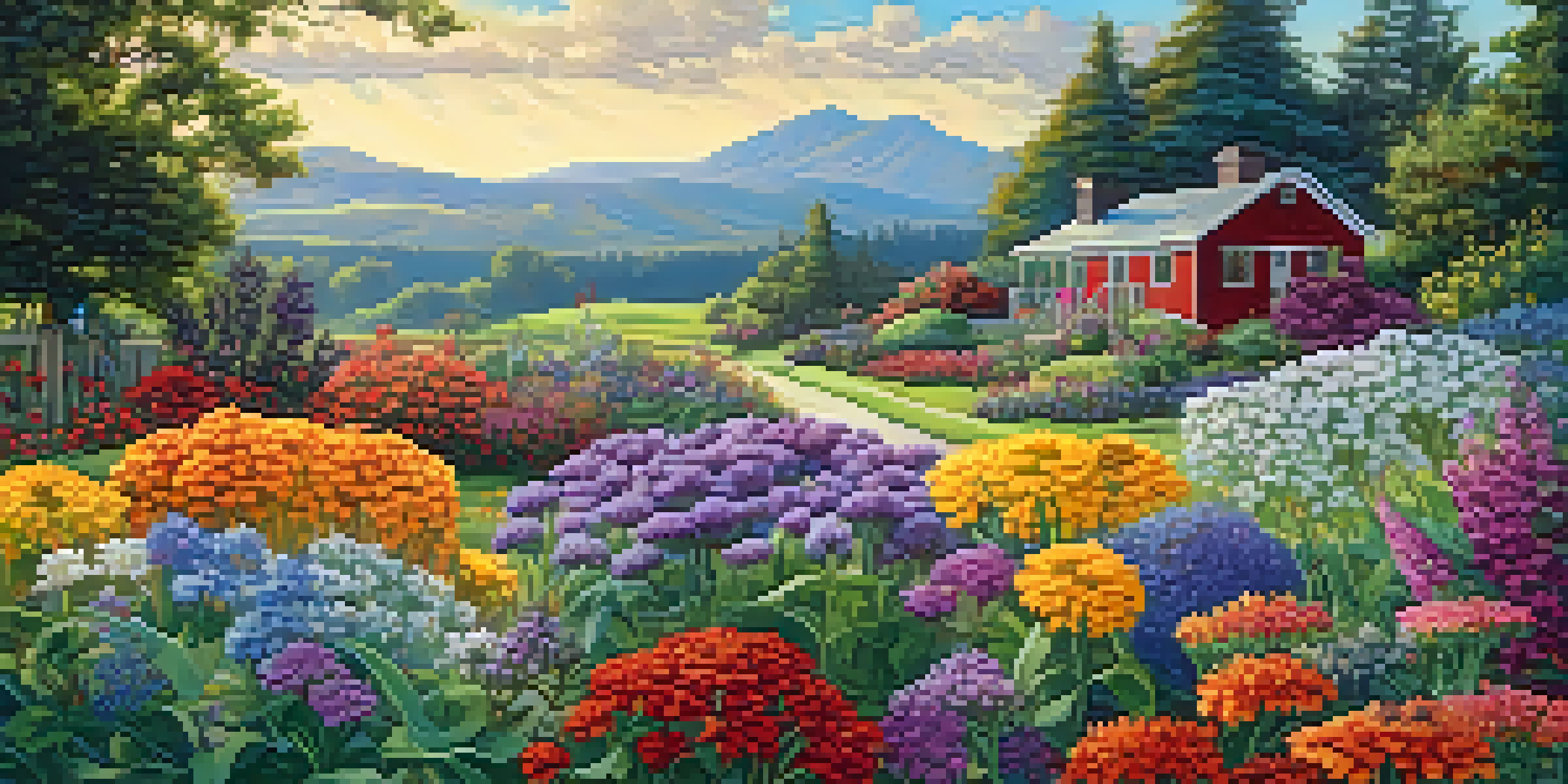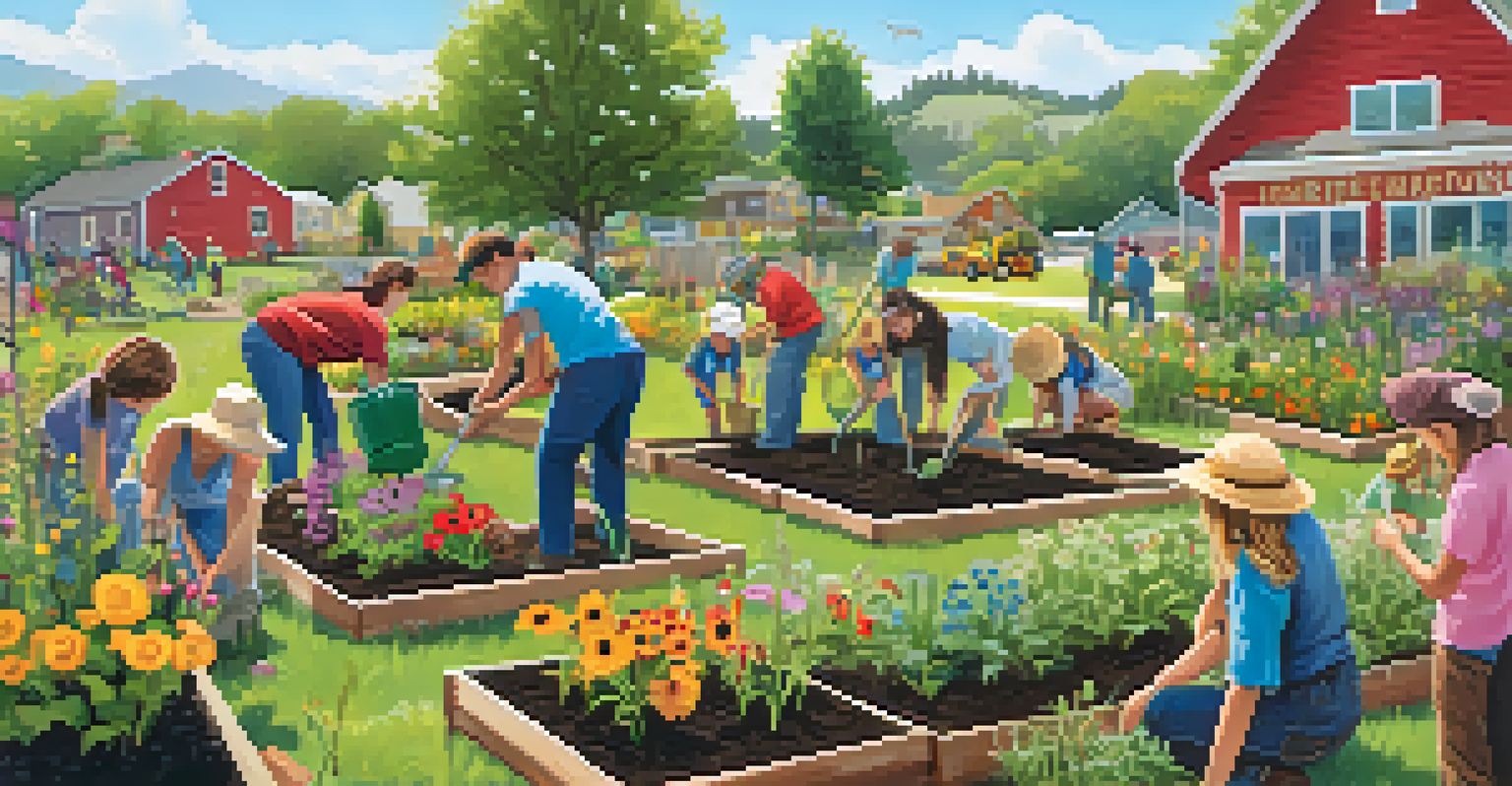Creating a Pollinator-Friendly Garden: Tips and Techniques

Understanding the Importance of Pollinators in Gardening
Pollinators, such as bees, butterflies, and hummingbirds, play a crucial role in our ecosystem. They help in the reproduction of flowering plants by transferring pollen, which is essential for fruit and seed production. Without these busy little workers, many of the foods we enjoy, like fruits and vegetables, would be severely impacted.
If we lose the pollinators, we lose the ability to feed our families and sustain our planet.
Creating a garden that supports pollinators not only helps the environment but also enhances the beauty and productivity of your outdoor space. Imagine walking through a vibrant garden buzzing with life, where flowers bloom in abundance thanks to the diligent pollinators at work. This symbiotic relationship between plants and pollinators can be immensely rewarding for any gardener.
Moreover, engaging with pollinators can provide a sense of connection to nature. It reminds us of the delicate balance within our ecosystems and encourages us to be more mindful of our gardening practices. By creating a pollinator-friendly garden, we contribute to biodiversity and help ensure the survival of these vital creatures.
Choosing the Right Plants for Pollinators
Selecting the right plants is vital when it comes to attracting pollinators. Native plants are often the best choice, as they have co-evolved with local pollinator species, making them more appealing and nutritious. For instance, planting milkweed can attract monarch butterflies, while coneflowers are a favorite among many bees.

Consider choosing a variety of plants that bloom at different times throughout the growing season. This strategy ensures that pollinators have a consistent food source from spring through fall. For example, early bloomers like crocuses provide essential nectar for emerging bees, whereas late bloomers like asters keep them fed as they prepare for winter.
Pollinators Are Essential for Gardens
Bees, butterflies, and hummingbirds play a crucial role in plant reproduction, impacting the availability of fruits and vegetables.
It's also important to include a mix of flower shapes and colors, as different pollinators are attracted to different types. Tubular flowers may attract hummingbirds, while flat, open flowers are great for butterflies and bees. By diversifying your plant selection, you create a welcoming environment that caters to a wide range of pollinators.
Designing Your Garden Layout to Attract Pollinators
A well-thought-out garden layout can significantly enhance pollinator activity. Start by grouping plants in clusters rather than scattering them throughout your garden. This approach makes it easier for pollinators to locate food sources, as they are more likely to visit a concentrated area of flowers than individual plants spread apart.
The future will be green, or not at all.
Creating layers in your garden, with taller plants at the back and shorter ones in the front, can also provide shelter and nesting sites. This design not only adds visual interest but offers safe spaces for various pollinators to thrive. Think of it as creating a diverse ecosystem within your garden, where different pollinators can find their preferred habitats.
Including features like water sources, such as birdbaths or small ponds, can further enhance your garden's appeal. Pollinators need water just like we do, and providing a safe drinking area encourages them to visit more frequently. Additionally, incorporating different textures and heights can create a more inviting space for these essential garden guests.
Creating Nesting Habitats for Pollinators
In addition to providing food, it's essential to offer nesting habitats for pollinators. Many solitary bees, for example, prefer to nest in hollow stems, bare soil, or even old wood. By leaving some areas of your garden undisturbed, you create perfect nesting spots for these important insects.
You can also enhance your garden's nesting options by adding bee hotels or insect hotels. These structures provide artificial nesting sites for various pollinators, including solitary bees and ladybugs. Position these hotels in sunny spots, sheltered from the wind, to make them more inviting.
Choose Native Plants for Success
Selecting native plants that bloom at different times ensures a consistent food source for various pollinators throughout the growing season.
Don't forget about the importance of leaf litter and dead plant material. These areas can provide shelter for overwintering pollinators and other beneficial insects. By allowing some natural elements to remain in your garden, you foster a diverse habitat that supports a range of pollinator species.
Avoiding Harmful Chemicals in Your Garden
The use of pesticides and herbicides can have a detrimental impact on pollinator populations. Many of these chemicals are toxic to bees and other beneficial insects, often leading to their decline. To create a pollinator-friendly garden, it’s crucial to adopt organic gardening practices whenever possible.
Instead of chemical treatments, consider using natural pest control methods. Introducing beneficial insects like ladybugs can help manage pest populations, while companion planting can naturally deter unwanted pests. For instance, planting marigolds can repel certain insects, protecting your other plants without harming pollinators.
Education is key when it comes to understanding what products can harm pollinators. Always read labels carefully and opt for organic or pollinator-safe alternatives. By being mindful of the products you use, you can create a healthier garden environment for both plants and pollinators.
Encouraging Community Involvement in Pollinator Conservation
Creating a pollinator-friendly garden can be an inspiring community project. By encouraging neighbors and local schools to participate in pollinator conservation efforts, you can help spread awareness and create a larger impact. Organizing workshops or community planting days can foster a sense of connection and shared responsibility.
Consider starting a community garden that focuses on native plants and pollinator habitats. This initiative not only beautifies the neighborhood but also serves as a valuable learning space for residents of all ages. Sharing knowledge about the importance of pollinators can empower others to make their gardens more welcoming.
Create Safe Habitats and Spaces
Incorporating nesting sites and avoiding harmful chemicals fosters a welcoming environment for pollinators to thrive in your garden.
Additionally, collaborating with local organizations or garden clubs can provide resources and support for your efforts. They often have access to native plants, educational materials, and even funding for community projects. Together, you can create a network of pollinator-friendly spaces that benefit both nature and your community.
Evaluating Your Garden's Impact on Pollinators
Once your pollinator-friendly garden is up and running, it’s important to evaluate its impact. Keep an eye on the variety and number of pollinators visiting your garden over time. You can even create a simple log to track your observations, noting which plants attract the most activity.
Consider setting up a photo point in your garden to visually document changes throughout the seasons. This practice can help you see which plants thrive and which might need adjustment or replacement. It also allows you to appreciate the evolution of your garden as it becomes a haven for pollinators.

Lastly, sharing your findings with others can inspire them to create their own pollinator-friendly spaces. Whether through social media, local gardening clubs, or community events, spreading the word about your successes can contribute to a broader movement towards pollinator conservation. Your garden can become a beacon of hope for our buzzing friends!